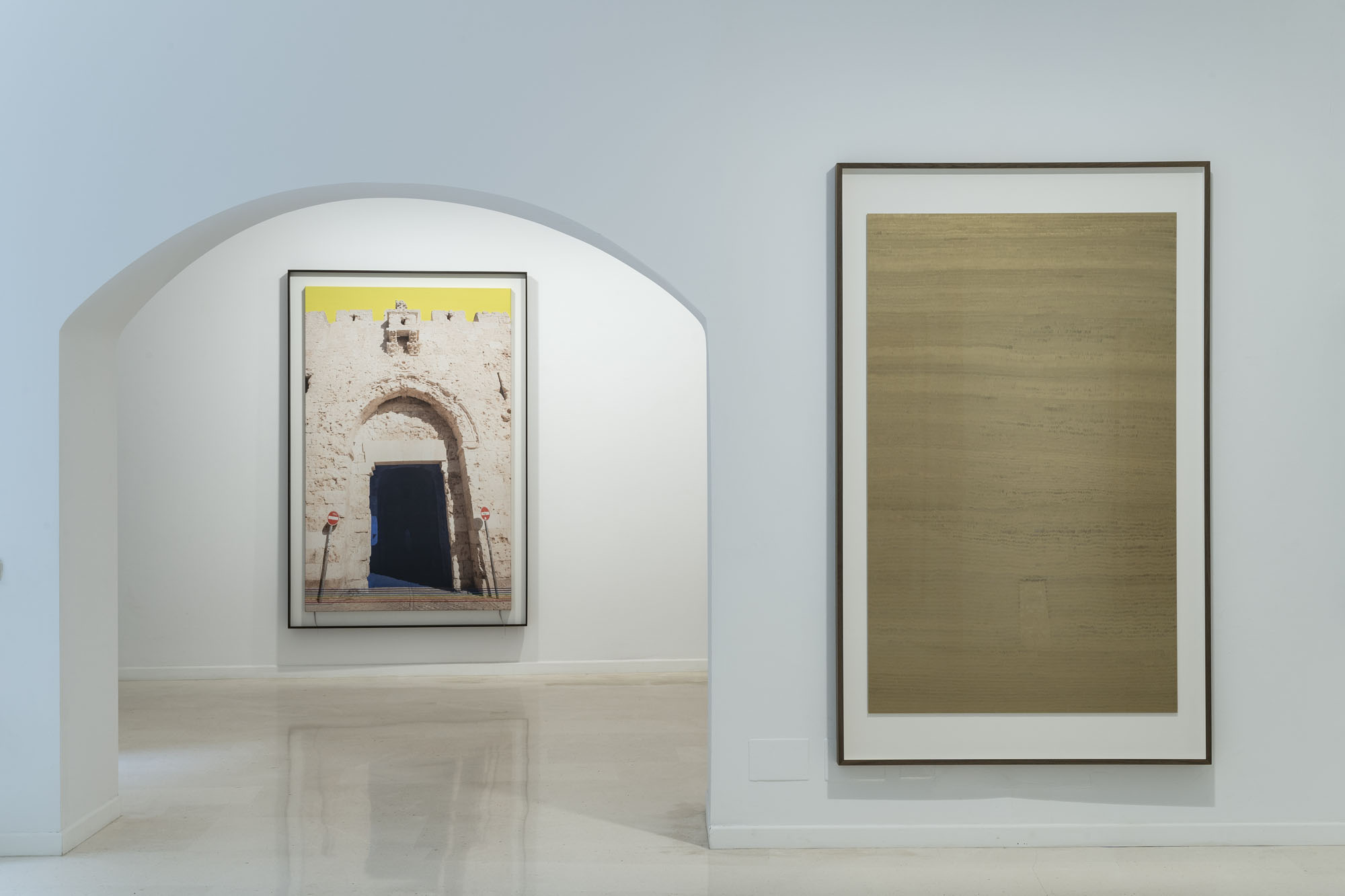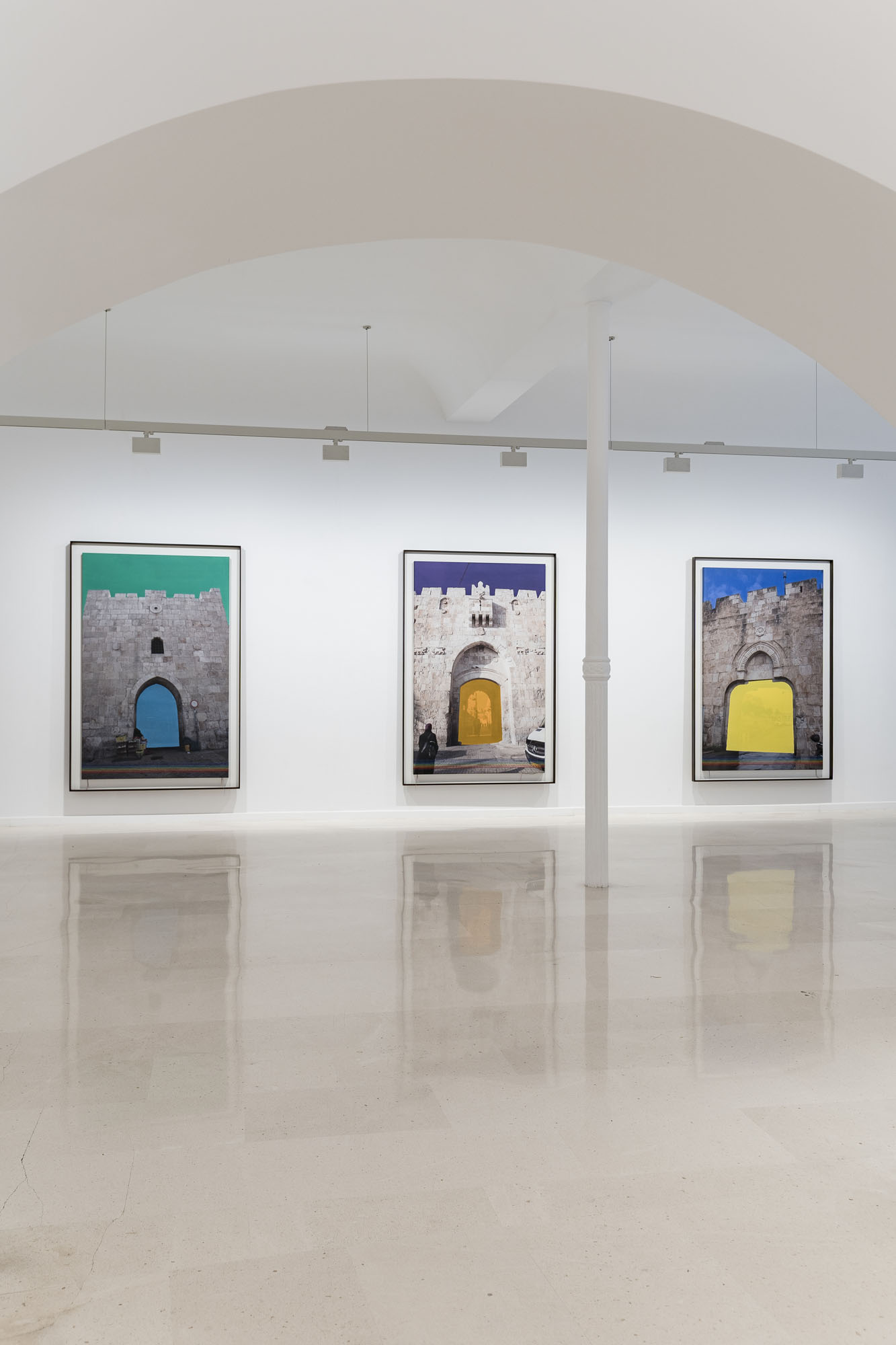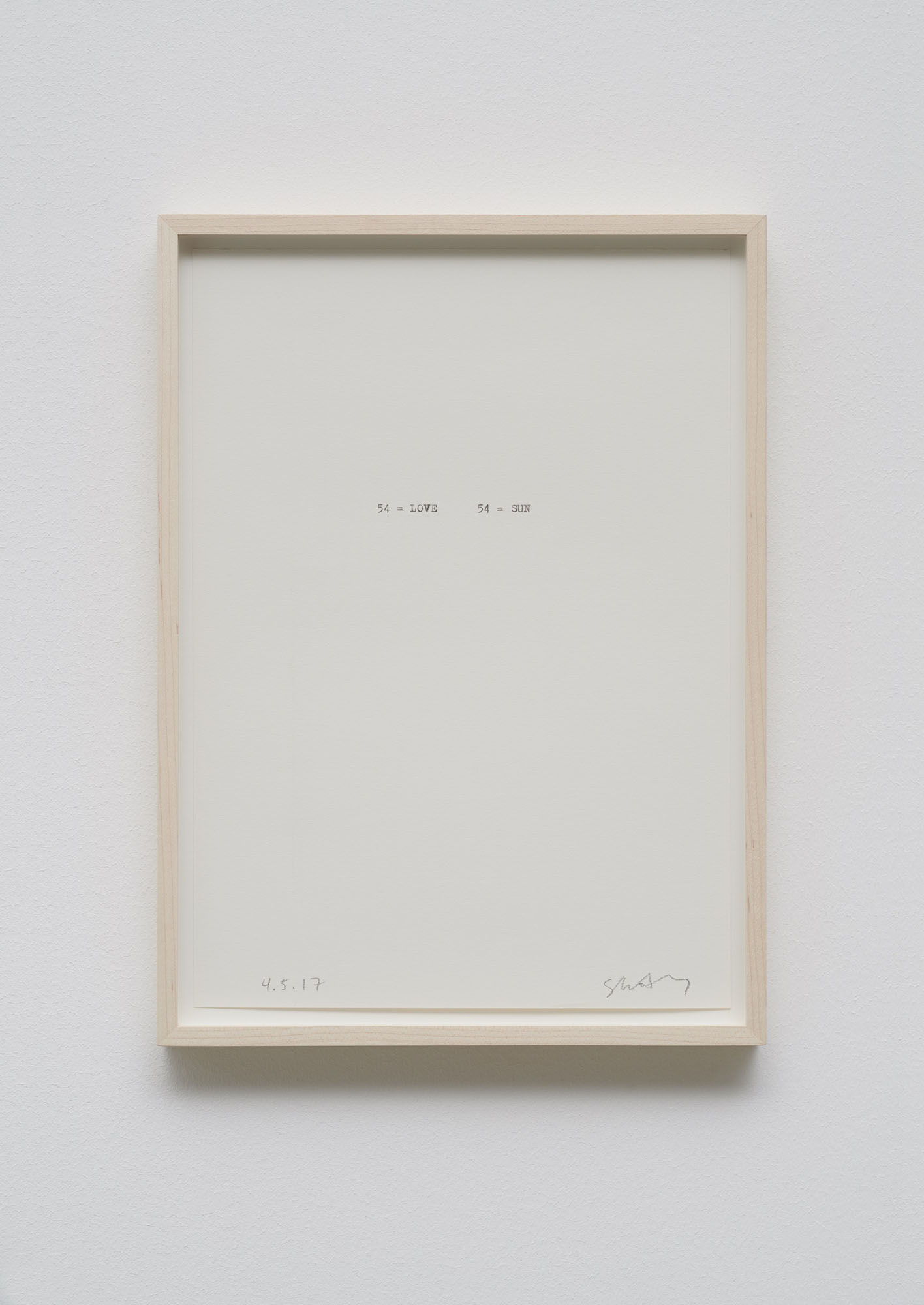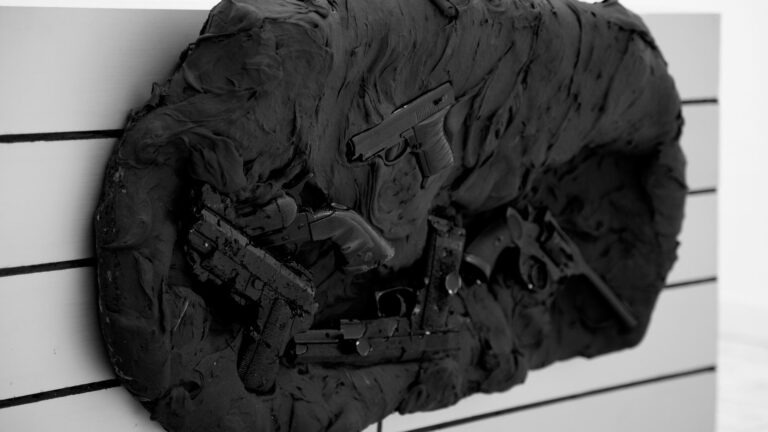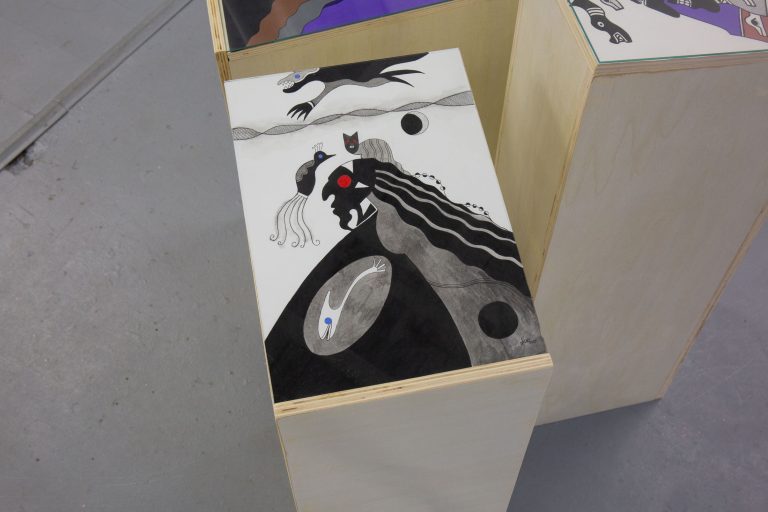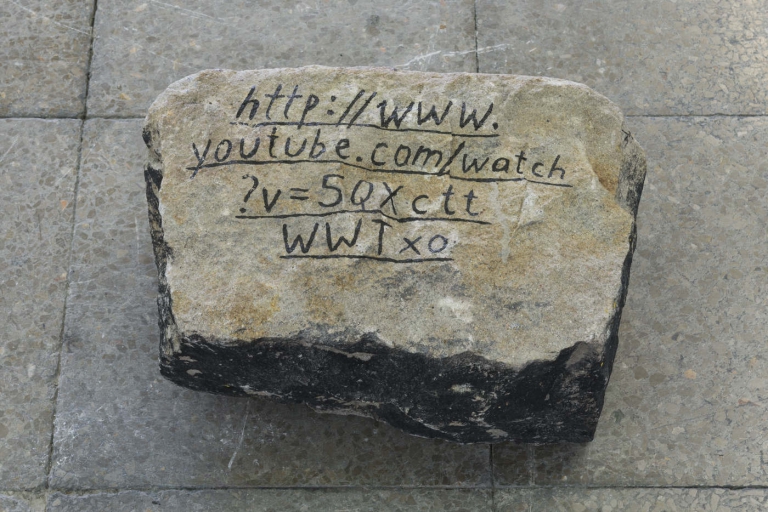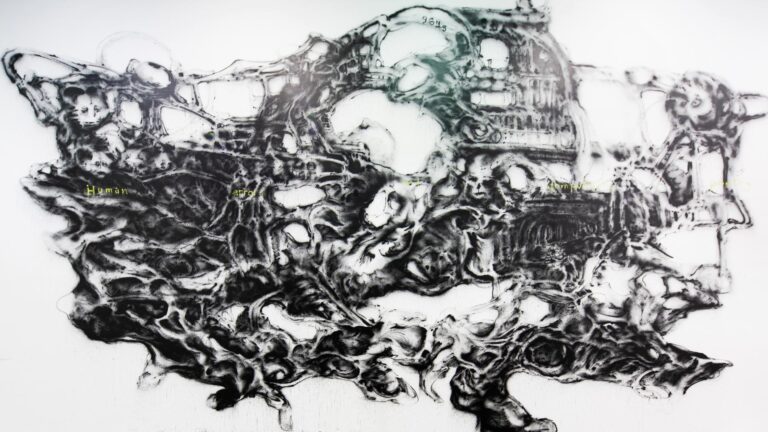Artist: Slater Bradley
Exhibition title: The Gates of Many Colors
Venue: Galería Pelaires, Mallorca, Spain
Date: May 19 – , 2020
Photography: ©Roberto Ruiz, ©Grimalt de Blanch / all images copyright and courtesy of the artist and Galería Pelaires
Can The Artist, as an archetype, connect our secular contemporary realities to a more transcendental awareness that incorporates our ancient wisdoms, systems, and even prophecies? American artist Slater Bradley’s newest body of work The Gates of Many Colors sees the artist (The Artist) adopting the role of a diviner; a conduit to knowledge he has come to acutely perceive in recent years of reflection and autodidactic studies of multiple religions and various branches of metaphysics. This awareness is reflected in his recent work.
In eight digital photographs transferred onto two-meter high canvases, eight gates of Jerusalem’s Old City Wall are depicted as monumental edifices. The images of the gates and the walls surrounding them nearly fill the picture planes; everyday features like parked cars and graffiti are visible. Yet the photographs are altered: in most, the sky appears as a flat, bright color rendered in acrylic applied directly to the photograph-on-canvas, the gate portal appears as another color. The clear hues — red, orange, yellow, green, blue, indigo and violet — also align with the symbolic colors of the chakra system that the Hindu and Buddhist religions attribute to energy wheels within the subtle body. The color progression culminates in transcendence through the crown chakra at the top of the head and connects the human to the divine. Bradley explains that in The Gates, the colors also refer to the Biblical figure of Joseph, the eleventh son of Jacob and firstborn of Rachel gifted with profound intuition and the ability to interpret dreams; the father one of the twelve tribes of Israel. The Bible’s Book of Genesis (37:3) describes how Joseph was given a coat of many colors, only to incur the jealousy of his brothers and be sold into slavery before rising to a position of power later in life.
Joseph’s was an arduous spiritual journey toward knowledge and enlightenment; the sequential colors symbolic of transcendence. Bradley adds yet another layer of ancient meaning to this series, seeing, as did many ancients, the Old City of Jerusalem as analogous to the body. Bradley photographed the gates over three days of the winter solstice in 2018 (the timing of the photography carefully calibrated to Venus’s morning rise and the winter solstice’s “Golden Gate” portal alignment to the source of new consciousness, which Bradley previously explored in his “SUNDOOR” body of work) in a series of performative gestures; passing through the gates like the meditative circumambulations of eastern devotional practice (with the exception of the Golden Gate—an eastern entrance point that has been blocked since the medieval era and will only be opened when the true messiah comes, thus the black sky). An identical rainbow of threads sewn along the lower edge of each canvas “grounds” the works; the threads’ends are left dangling like those in unconnected electrical circuits. Their presence acts as an additional symbol of Joseph’s colorful coat but also the canvas’s materiality, connecting the sacred meaning inherent in the works to more earthly concerns.
“Lucifer’s Shield” (2020), comes from Bradley’s “Shield” series, created through thousands of tiny hand-applied pen strokes in gold ink, a kind of pointillist monochrome applied over a mounted photograph of the chapel of Ascension on the Mount of Olives, where Jesus Christ is said to have ascended. Lucifer was a fallen angel, his name analogous not to darkness but light; numerologically, says Bradley, Joseph is a coded reference to Lucifer: Those who have possess all colors are the bringers of light.
The Gates are portals to a holy place recognized by all three of the world’s major monotheistic religions; the colors applied to Bradley’s representations of them—which appear both curious and perhaps even ominous at times, yet also optimistic—hope to activate new kinds of awareness in exhibition viewers. Together and individually, these pictures evoke mysteries that transcend belief: Bradley does not call for belief, but rather for experience, like his own in photographing these images under special conditions (as he says, in an effort to metaphorically break barriers). “Humanity is where we are because the Golden Gate is blocked,” he claims. “Our access to the spiritual worlds has been blocked by materialist pursuits.”
The pieces differ from the color-symbolic works of other artists inspired by or evokingspiritual or even occult practices, like Hilma af Klint’s divinely-inspired curls and circles, Mark Rothko’s vibrational color fields, and Agnes Martin’s rigorous yet somehow meditative geometries. They are neither abstractions, nor do they attempt to erase or deny the worldly. They rather take our ordinary, fragmented, and often violent realities as a starting point toward developing a collective, and even cosmic consciousness; toward a paradigm shift away from destruction, extraction, and distraction and toward wisdom and healing. Bradley has long known that there is more knowledge out there, and available in different forms, than most dare to admit or attempt to decode. The ancients were onto something.





